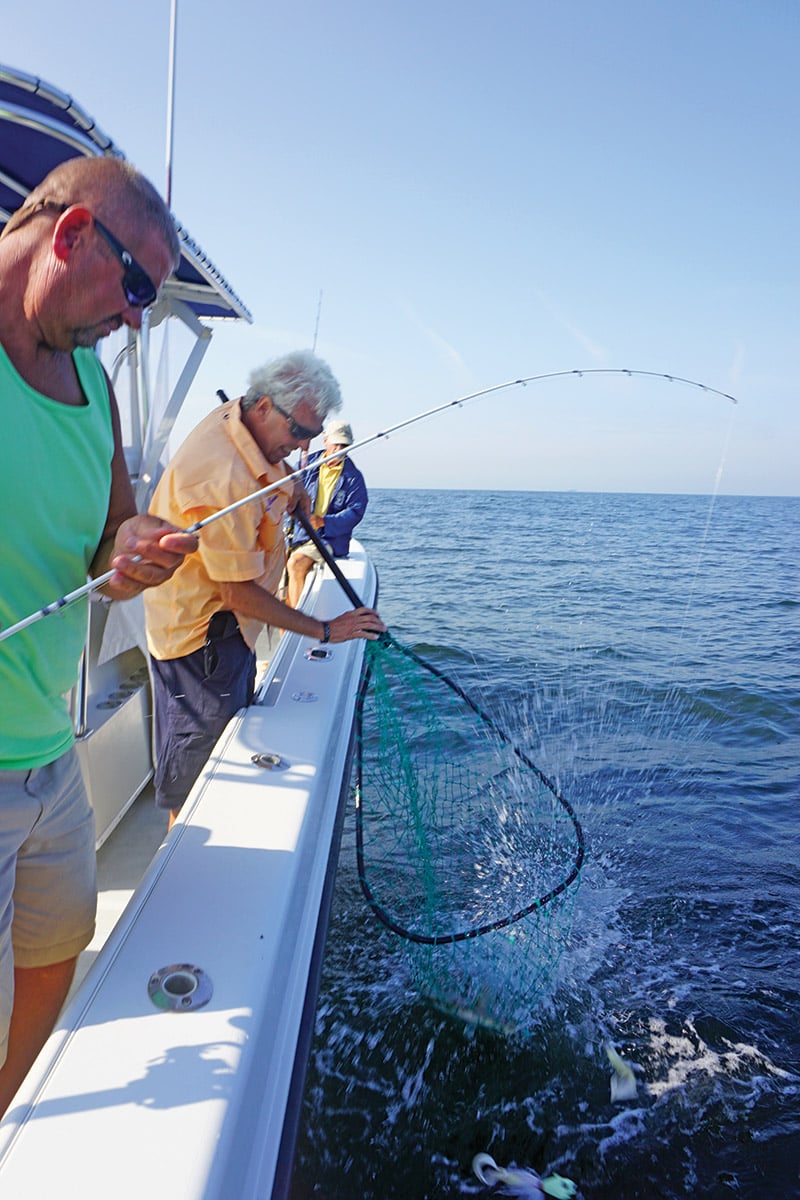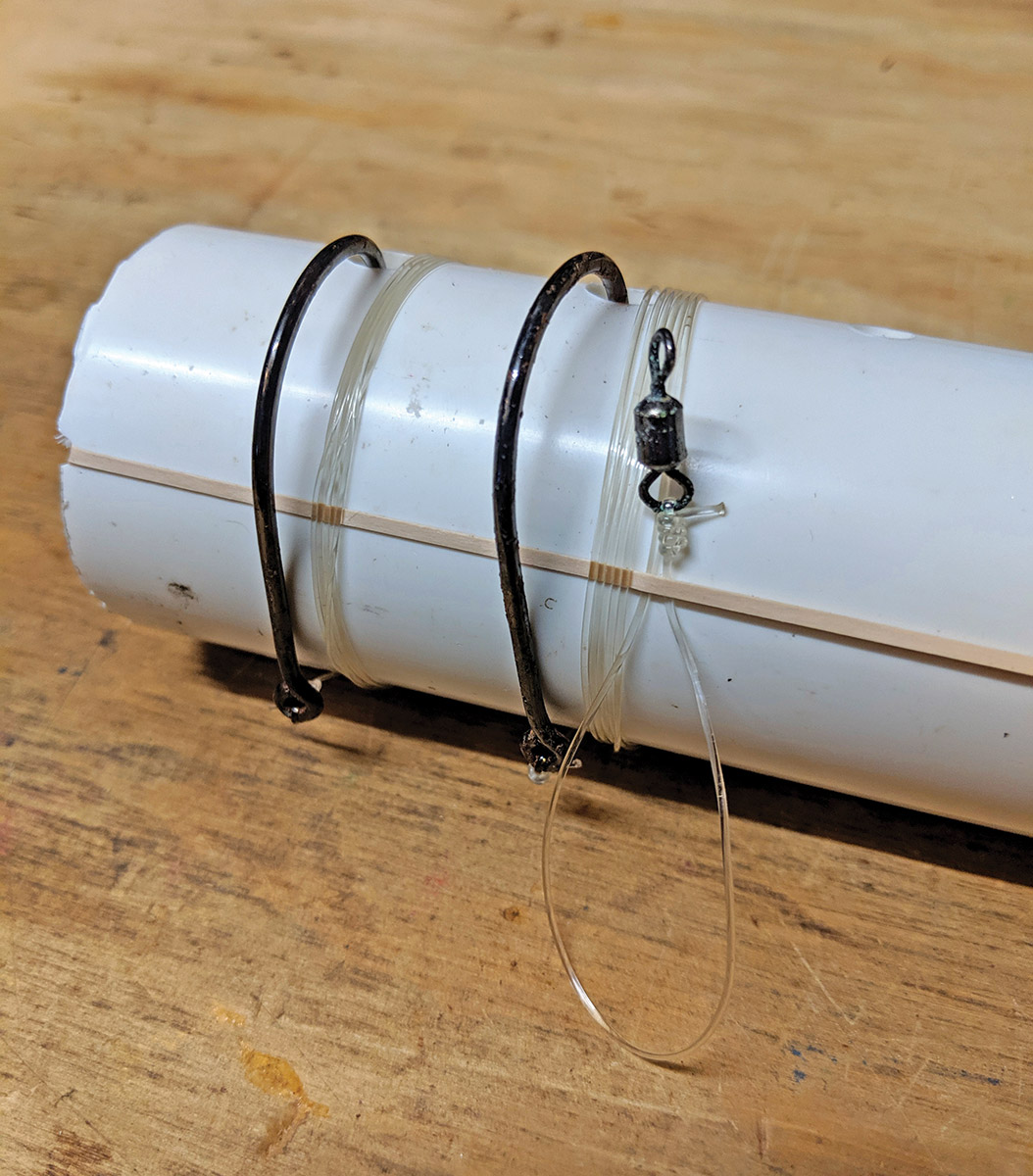
This simple inshore DIY rig-keeper can keep you tangle-free.
When the bite is hot and it’s time to re-rig, retying and fumbling through terminal tackle is sure to help you miss the bite. Having rigs ready to go is the key to putting more fish on deck in a hot bite.
A “wrap-a-rig” is just a simple, homemade piece of equipment used to store rigs in a neat and orderly fashion. With resealable plastic bags causing more headaches than help, a wrap-a-rig is a great solution, which keeps rigs easily accessible in just seconds. It requires something to wrap the rig around (wood, PVC, etc.) with holes for the hook, and a rubber band to hold the swivel or tag end.
The benefits of a rig wrap like this is that it keeps the rigs separated, but all in one place. Standard leader wheels work, but can easily get tangled if not done properly every time. Plastic bags also work, but hooks get stuck in them and they easily fly around the boat.

First, start with a length of desired material, preferably something with round edges since the line is going to be wrapped around it. I prefer PVC pipe, at least 1-1/2 inches in diameter. The type, length, and diameter of the material can also be determined by the type of rig. For example, a bigger sized PVC pipe would be more suitable for a striped bass rig where an 8/0 circle hook is used. A smaller PVC pipe can be used for weakfish or sea bass rigs where a 1/0 or similar sized hook is used.
Once the material and length are chosen, cut notches in the end in order to hold a rubber band lengthwise along the pipe. This is to hold the swivel or tag end of the rig in place. Then, determine how far apart the rigs should be placed. Make even marks along the material in a straight line. This is where the holes are going to be drilled for the hooks to go into. A good drill bit is 1/4-inch, but this can be tailored based on personal preference.
Once the holes are drilled and the notches are cut, put a rubber band on. Once that is on, it’s as easy as putting the hook in the hole, wrapping the rig, and tucking the tag end under the rubber band.



